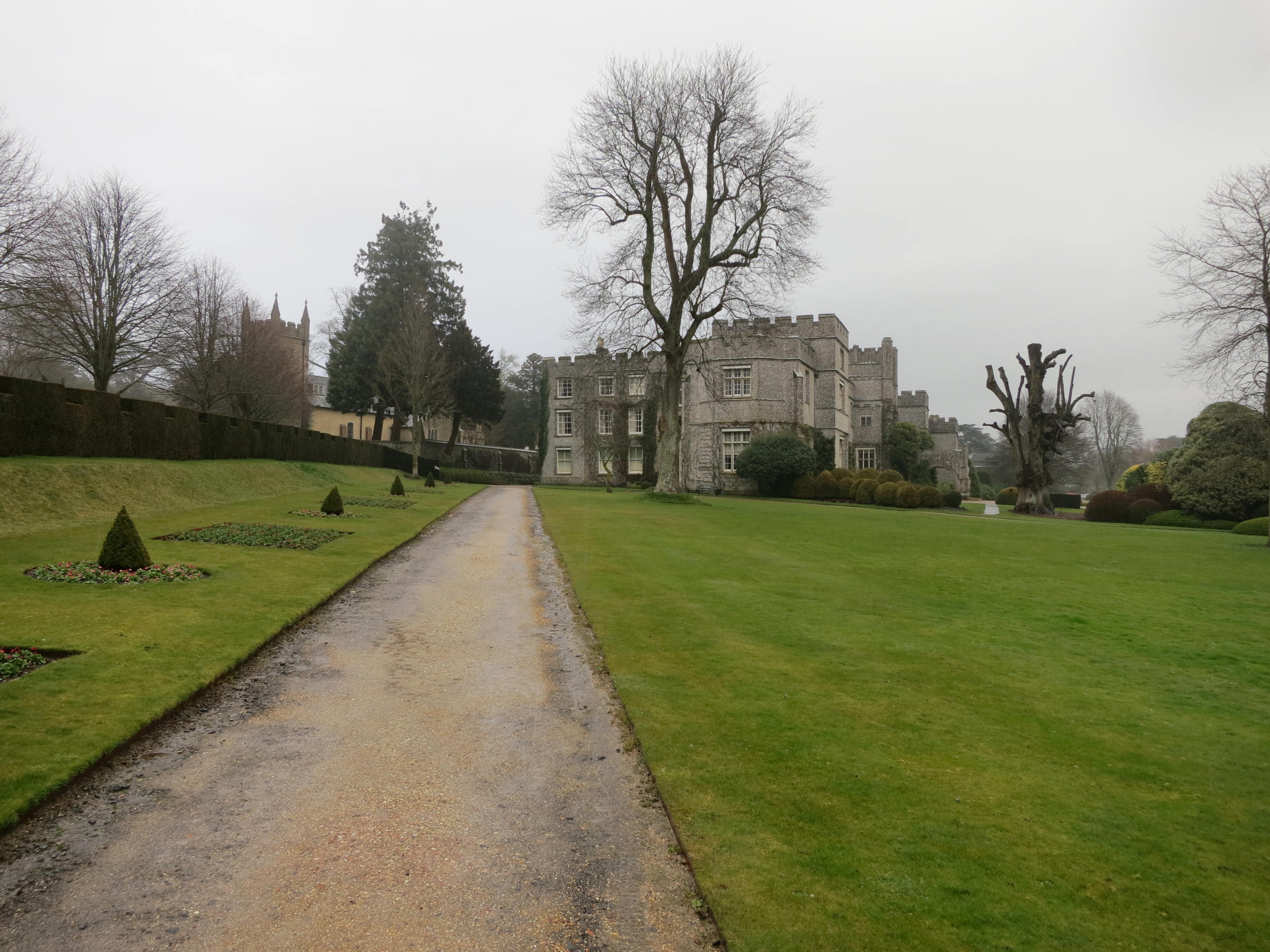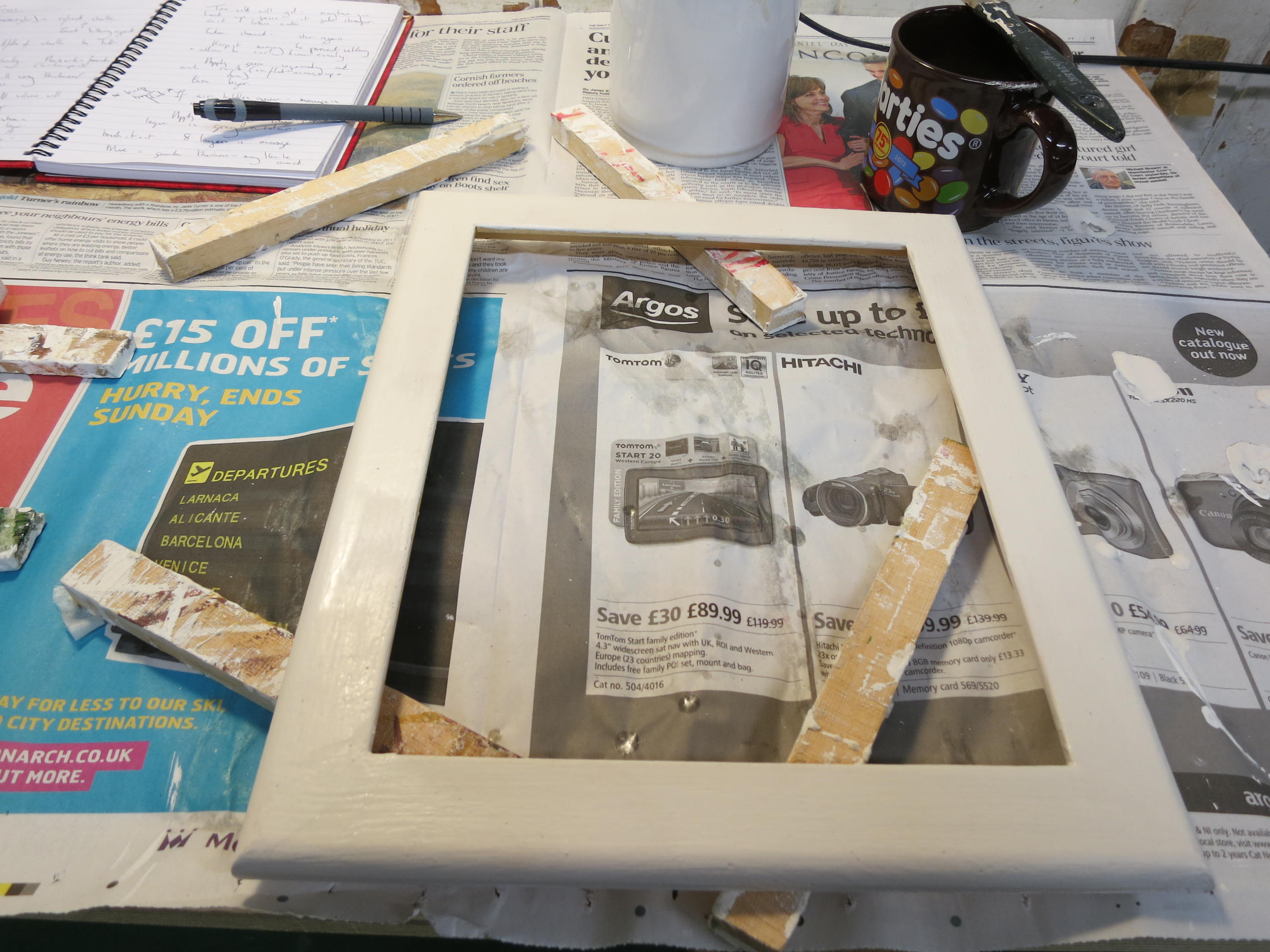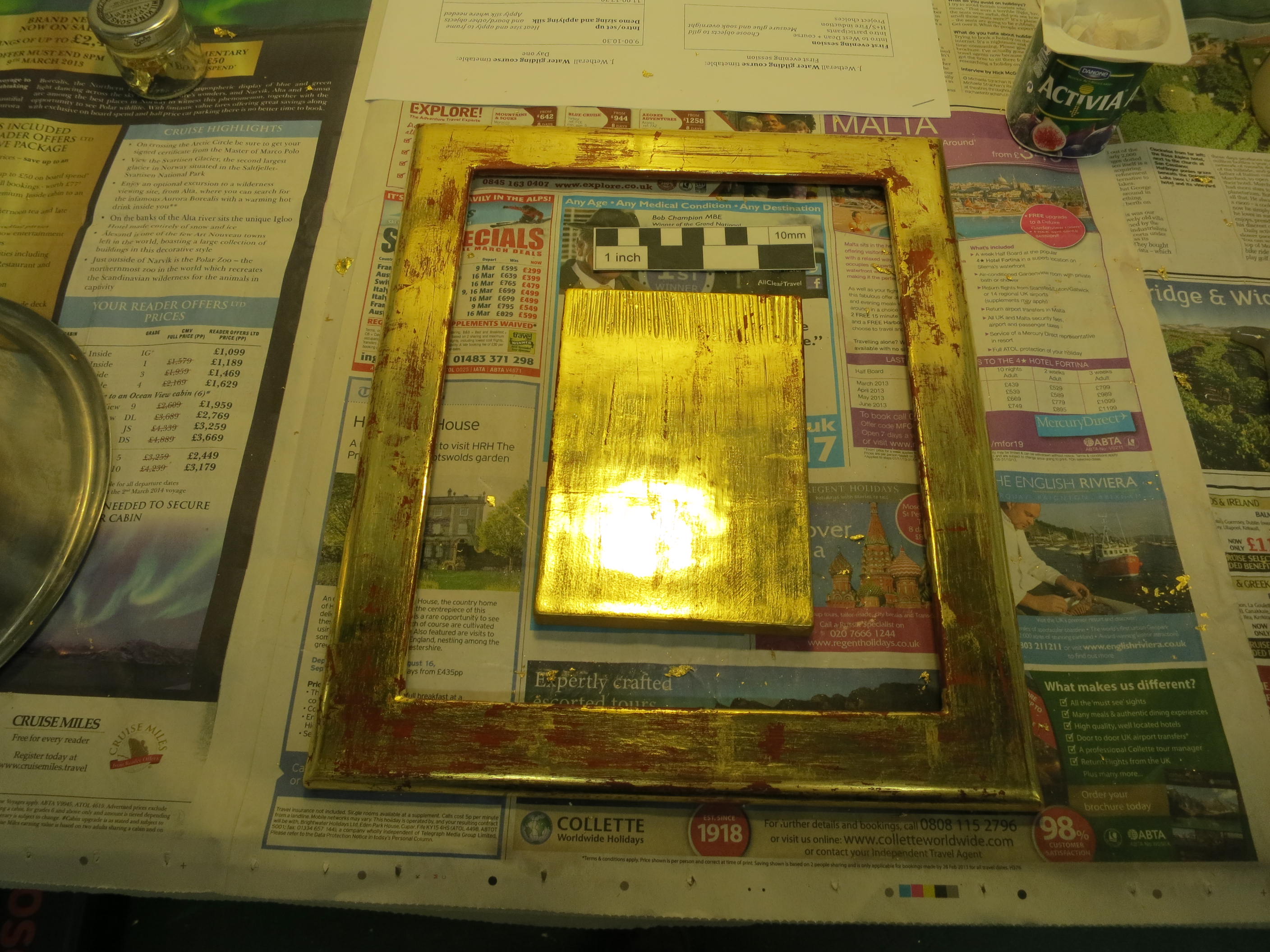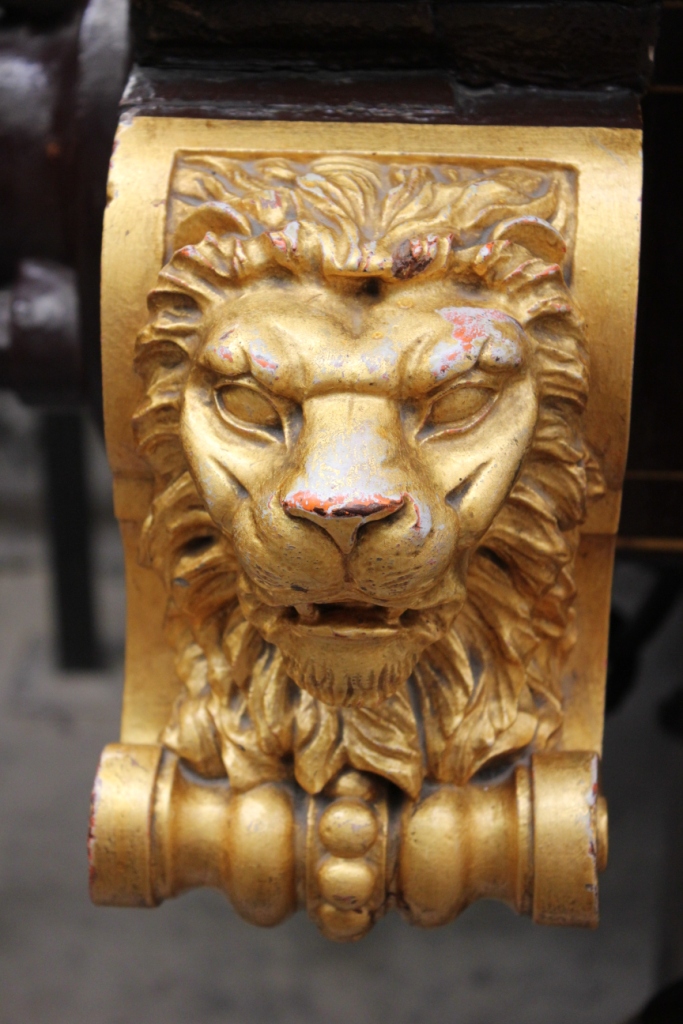Back in March, I was privileged to attend a three-day course on water gilding at West Dean College, the impressive home of the Edward James Trust. It was established by the late Edward James, reputedly an illegitimate son of Edward VII, who was a friend and contemporary of John Betjeman and a sponsor of Salvador Dali.

By applying a thin covering of gold to a prepared surface an appearance of solid gold can be achieved – without the cost and weight of the solid metal. This art can be traced back to the ancient Egyptians – it has been described as the second oldest profession! In fact all the tools and materials I used would have been familiar to Italian Renaissance craftsman. The materials are all naturally occurring substances – gold, rabbit skin glue, chalk/gypsum and pipe clay.

Firstly the wood needs to be sized with hot rabbitskin glue before the application of ‘Gesso’ – a plaster like substance being a mixture of animal glue and either chalk or gypsum. The Gesso provides a smooth stable bed for the application of the gold leaf and anything between 8 to 20 coats may be required. Then you do a dry rub down with fine silicon paper, to achieve a surface for gilding, this process can take hours.

The next step is the application of ‘Bole’ – this makes the Gesso less porous thus slowing the absorption of the size water when applying the gold leaf. As gold leaf is translucent, yellow bole (2 or 3 coats) provides colour enrichment beneath the gold, whilst red bole burnishes better and is used for highlights.

The gold leaf is cut to the required size on a gilder’s cushion and put in place with a small flat brush known as a ‘tip’ after first applying ‘size water’ – a mixture of glue size water and meths. By keeping the ‘tip’ moist with petroleum jelly it will lift the goldleaf which in turn is drawn off the tip by the moisture in the size water. Gild from the upper surfaces downwards – making sure each leaf overlaps. When almost dry begin burnishing with an agate stone hammer – gentle sweeps over the surface gradually increasing pressure until required finish is achieved.

This fascinating and immensely rewarding course has broadened the skills of both myself and the department and potentially could be developed to care for items in the National Collection such as picture frames and furniture as well as offering a stepping stone towards oil gilding and the care of railway vehicles.
